10 Mothers-in-Law Who Know How to Stir the Pot

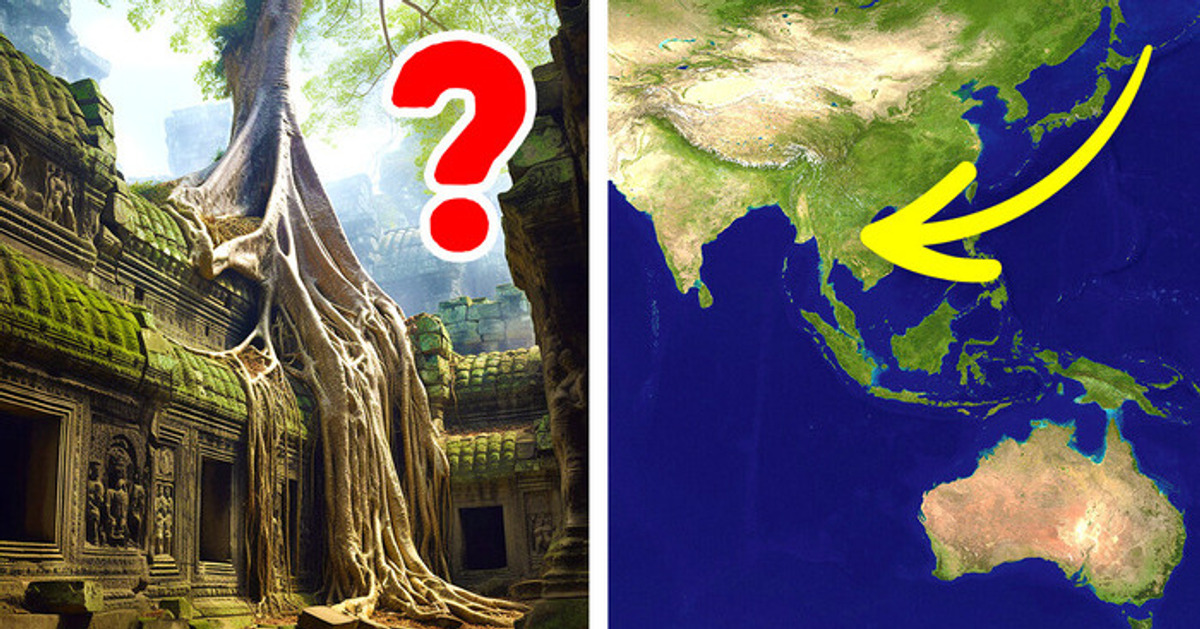
Imagine you could spend an entire week scanning ancient ruins and taking photographs of the world’s most surreal archeological sites! Would you be up for it? So, let’s do some digging! — The first stop on your busy itinerary is South East Asia. It’s home to some pretty cool ruins. You start in Bagan [Bay-gn], located in the hinterlands of Myanmar. There are many ways to visit the site, and you’re glad you’ve booked two different experiences!
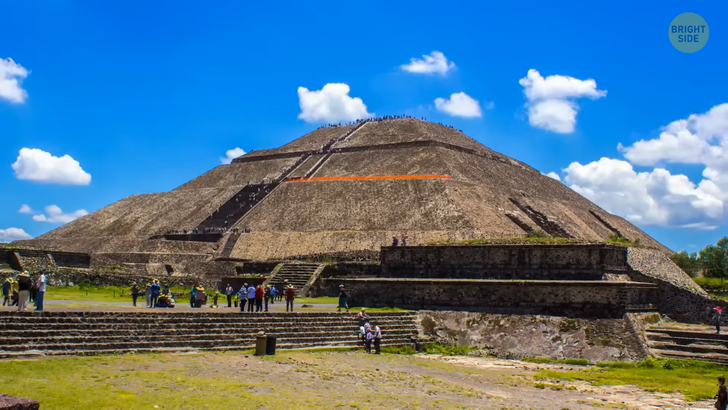
The first one is a hot-air balloon trip at sunrise. Right before dawn, you board the balloon, and as soon as the sun starts to appear on the horizon, you begin your flight over the marvelous area. As the sun rises, it glistens on more than 2,000 conic-shaped golden structures. The hot-air balloon ride is quick, but it gives you unparalleled views of all the 40 miles over which the site sprawls.
Back on land, you rent a bicycle and roam the village of ruins. Some of them are open and allow you to peep inside. These magnificent ruins were built between the 11th and 13th century CE and were mainly places of worship. There were originally over 10,000 buildings, but they were gradually deteriorating over time due to earthquakes. Thankfully, the site became a UNESCO world heritage site back in 2015 and has since been preserved.
— Up next, you catch a flight to Cambodia. You take some time to visit Angkor [AHNG-kor], the world-famous archeological site nestled deep within the jungle. Good thing you’ve brought bug spray with you! The city of Angkor was once the capital of the Khmer [kuh-mehr] Empire from the 9th to 15th century. FYI, the word “Angkor’’ means “capital city” in the Khmer language. The city was founded by King Yasovarman I, and it became one of the largest cities in the preindustrial world! Researchers say nearly one million people lived there.

Until today, Angkor is admired for its stunning architecture. The Khmer style is recognized in the use of huge blocks of sandstone. The towers are believed to have been once decorated with gold. But today, the site is a maze of vine-covered temples. The city was abandoned in 1431 and wasn’t rediscovered until the 1840s. Oh, and just so you know, this is also a UNESCO heritage site. It became one in 1992. In case you want to brag to your friends about your culturally rich adventures in the future!
— Now, your trip continues in Egypt! You’re here to visit the Karnak [Kaarnak] Temple in the city of Luxor. You opt for the most unusual way to get to Luxor, that is, a boat ride down the Nile river. Leaving Cairo, you head south until you reach the famous ancient city. Luxor was once the capital of Egypt and a true hub of power and wealth. That is why the Karnak complex is such a great archeological site. You choose to visit it at night, and still at the entrance, you are struck by the site’s beauty. In the evening, artificial lights cast a golden glow on the temple’s statues and stone columns.
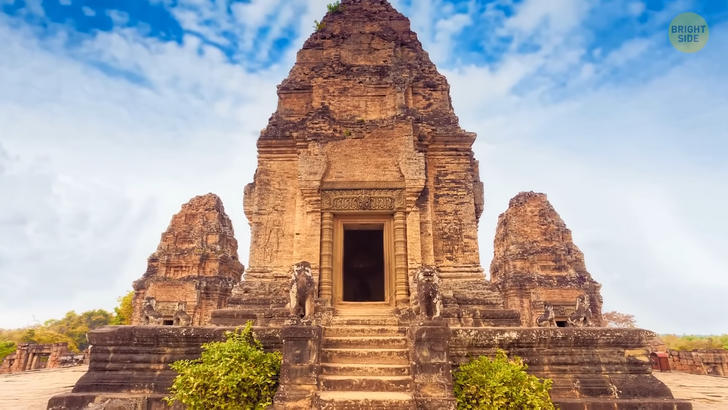
The temple is huge and was built mainly around the 18th and 19th centuries BCE. Each Egyptian pharaoh from that period left their own architectural mark on the site. The highlight of this tour is taking a walk through the Avenue of Sphinxes and discovering the great Hypostyle [hai puh stai uhl] Hall. This hall is filled with towering pylons and solid sandstone columns: a true wonder!
— From Egypt, you head down to Jordan. Now, if you like terracotta landscapes, you’ve come to the right place! The city of Petra is a marvel of the ancient world. Located in Jordan’s desert, the city was a commercial hub back in the 4th Century BCE. The Nabateans, an Arab Bedouin tribe, lived in the so-called Rose City and thrived for many years, having accumulated a significant amount of wealth.
The city was known for its innovative water management system, which made the region inhabitable. And yes, you’ll catch a glimpse of its ruins on your tour. The rock-carved gate-like structure Petra is famous for is called the Pharaoh’s Treasury. It stands at the main entrance to the site and is said to have a treasure hidden beneath it. Don’t forget to stand right beneath it and take one of those classic pictures for social media!
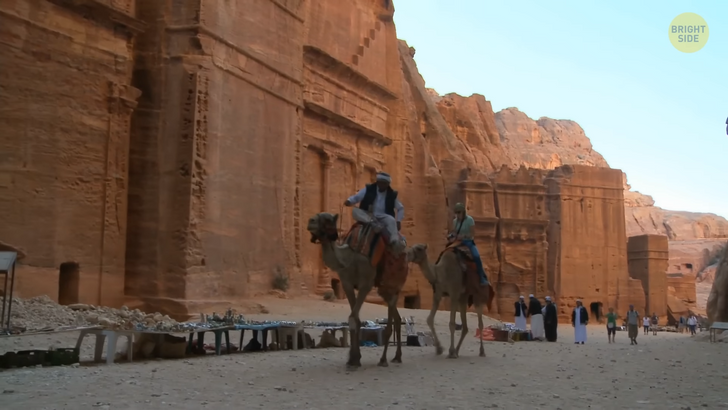
— Once Petra has been ticked off the list, you fly to Southern Europe. More specifically, to the tip of the Italian boot! You have a day trip scheduled to visit the ruins of Pompeii. Pompeii can be reached by car from the city of Naples. It’s home to the eerie yet well-preserved ruins of a city that was once engulfed by lava. When Mount Vesuvius erupted in 79 CE, it left the city of Pompeii completely buried under millions of tons of volcanic ash. The ancient city was first discovered by beneath the volcanic rock in the 16th century. But it was first cleared from debris in the 1870s. Today, you’ll be able to walk down the streets of these ancient Roman ruins and imagine what the town looked like in its heyday.
Pompeii was a vibrant and rich municipality. The site’s ruins revealed that many areas of Pompeii had boasted impressive bakeries, markets, and even houses with balconies, which were a sign of great wealth at the time. And believe it or not, even some artwork survived the eruption: archeologists found well-preserved frescoes and murals with mythological creatures. All this indicates that members of the high society lived there. The city even had thermal baths and showers made from luxurious materials.
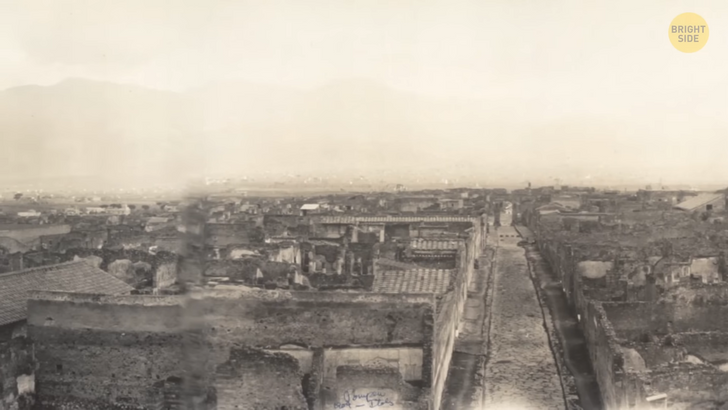
— While you’re still in Europe, you’ll hop over to visit the iconic Stonehenge. It’s a perfect day trip if you stay in the city of London — just a short train journey away. Stonehenge dots the Salisbury plain in Wiltshire, England, and is one of the world’s most recognized ancient ruins. More than 5,000 years old, these curious stone rings are some of the oldest stone structures on the planet. Created out of sandstone, they are shrouded in mystery. Who built them and why is still largely unknown. Popular theories claim that Stonehenge was used as a giant solar calendar, built to help people keep track of days, weeks, and months. Hmm, talk about hard work to create a mere calendar, huh?
— And the final leg of your trip will take you to explore the southern Americas. In Guatemala, in Central America, you’ll find ancient Mayan ruins. The lost city of Tikal [Tee-kl] is a site made of 3,000 buildings: the remains of the capital of the Mayan empire. You can compare its importance to such cities as London or New York today. The North Acropolis is Tikal’s most ancient complex of monuments. Built solely by human hands in 350 BCE, it served as the resting place of Kings and chiefs. Back in the day, the step-pyramid temples were painted a beautiful red. Mayans loved that color! Today, of course, you’ll only see the limestone. You might wonder what made such a great city turn into ruins. Well, archeologists have no clue about the cause of Tikal’s decline. Until today, this question remains unanswered: was it a drought? Disease? Maybe we’ll never know!
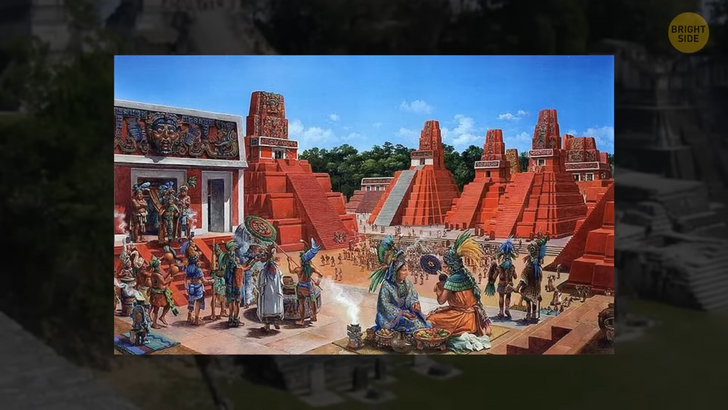
— Are you in the mood for some more Mayan ruins? Chichen Itza [Chee-Chen-It-Suh] is an archeological site with the best-preserved pyramids on earth. Located in Mexico’s Yucatan state, this Mayan city is well over 1,500 years old. At its peak, it was home to 35,000 people. The site covers 1.9 square miles and has many ruins spread throughout it. The highlight is El Castillo [kahs-tee-lyaw], a tremendous step temple rising 80 feet above the ground. Its most peculiar feature is that it has 91 steps on each of its four sides. Including the upper platform, which makes for 365 steps. The same as the number of days in the solar year. Phew! What an intense trip! Time to head home now and soak it all in. See you next time!











